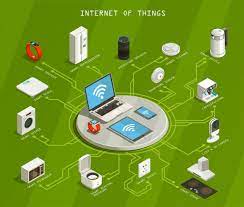Analyzing and visualizing IoT data often requires the use of specialized tools and platforms that can handle the scale, complexity, and real-time nature of IoT data. Here are some commonly used tools and platforms for analyzing and visualizing IoT data:
- Apache Kafka:
Apache Kafka is a distributed streaming platform that can handle high-volume, real-time data ingestion from IoT devices. It provides reliable and scalable messaging capabilities, allowing you to collect and process data streams from various sources. Kafka acts as a central data pipeline, enabling real-time analytics and integration with other data processing tools. - Apache Spark:
Apache Spark is a powerful open-source data processing framework that supports large-scale data analytics. It provides a unified analytics engine for batch processing, real-time streaming, machine learning, and graph processing. Spark’s rich ecosystem and libraries make it suitable for performing complex analytics tasks on IoT data. - Apache Flink:
Apache Flink is another popular open-source stream processing framework for real-time data analytics. It provides support for event-time processing, fault tolerance, and stateful computations, making it well-suited for processing and analyzing continuous streams of IoT data. Flink offers a high-level API and supports various data sources and sinks. - Tableau:
Tableau is a widely used data visualization tool that enables users to create interactive and visually appealing visualizations and dashboards. It supports various data sources and offers a drag-and-drop interface for creating charts, maps, and other visual representations. Tableau can connect to IoT data sources and help users gain insights through dynamic visualizations. - Power BI:
Microsoft Power BI is a business intelligence platform that enables users to analyze and visualize data from various sources, including IoT devices. It provides a range of data connectors, interactive dashboards, and powerful visualization capabilities to explore and communicate insights effectively. Power BI also supports real-time streaming data for live monitoring and analysis. - Grafana:
Grafana is an open-source platform for monitoring and visualizing time series data. It supports integration with various data sources, including popular IoT data platforms such as InfluxDB and Prometheus. Grafana offers a rich set of visualization options, such as graphs, gauges, and heatmaps, and allows users to create custom dashboards for real-time monitoring and analysis. - AWS IoT Analytics:
AWS IoT Analytics is a managed service provided by Amazon Web Services (AWS) specifically designed for IoT data processing and analytics. It offers features for data ingestion, storage, data preparation, and advanced analytics. AWS IoT Analytics integrates with other AWS services, such as AWS IoT Core and Amazon QuickSight, enabling end-to-end IoT data analysis and visualization. - Google Cloud IoT Core and Data Studio:
Google Cloud IoT Core is a fully managed service for securely connecting and managing IoT devices. It integrates with other Google Cloud services, including Google BigQuery and Google Data Studio. BigQuery allows you to store and analyze IoT data at scale, while Data Studio provides a user-friendly interface for creating interactive dashboards and reports. - ELK Stack: ELK (Elasticsearch, Logstash, Kibana) Stack is a popular open-source solution for log analytics and visualization. Logstash is used for data ingestion and preprocessing, Elasticsearch for storing and indexing data, and Kibana for data visualization and dashboards.
- Grafana: Grafana is an open-source data visualization and analytics platform that supports various data sources, including IoT data. It offers a user-friendly interface for creating dynamic dashboards, visualizing real-time data, and performing ad hoc analytics.
These tools and platforms provide a range of capabilities for analyzing and visualizing IoT data, including data ingestion, storage, processing, and visualization. The choice of tool or platform depends on factors such as data volume, real-time requirements, integration needs, and the expertise of the development and analytics teams.
SHARE
